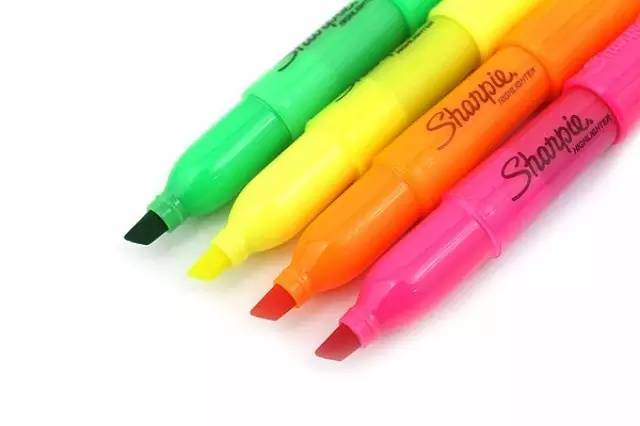
How did the color of the fluorescent pen come from?
Dye molecules in fluorescent pens
when you draw a key point in your study and work, you always need a fluorescent pen. Today, let's talk about its color
(of course, sometimes the key point is the need for a brush.)
where does the color of the fluorescent pen come from? In general, there are several commonly used water-soluble organic dyes, and then other colors depend on the blending of these basic ingredients.
the yellow fluorescent pen is probably the most common, and it is generally a dye-containing pyrene compound (pyrene is a tetracyclic polycyclic aromatic hydrocarbon). For example, 8-hydroxy-1 ~ (6-pyrene) trisodium (also known as solvent green 7). At the same time, fluorescein, an organic dye that emits green fluorescence, is also used.
the blue fluorescent pen usually uses triphenylmethane dyes, such as acid blue 9. If you mix it with the dye of the yellow fluorescent pen mentioned earlier, you can get a green fluorescent pen.
Showcase your desirable figure with our trendy collection of casual second wedding dresses. Buy now to enjoy and experience the happy shopping.
Rhodamine dyes are used to make pink fluorescent pens, and purple can be obtained if it is mixed with a blue dye. And, if coumarin dyes and dyes are mixed, orange can be obtained.
these names are indeed somewhat abstract, so let's just look at the picture:
(picture from: compoundchem.com)
In this picture, we can see the molecular structure of several common fluorescent pen dyes mentioned above.
We can see that these compounds also have a lot of alternating single and double bond structures like the colored organic compounds we have introduced before, which is the phenomenon of "conjugation". This phenomenon causes the bonding electrons to become more "free". The photons that absorb less energy can transition, and the photons fall within the range of visible light and can produce color.
in addition, a small experiment can be done with a fluorescent refill containing fluorescein. If you take out the fluorescent refill and dissolve enough pen water into the water, you can get "luminous water". Under the action of ultraviolet light, it can emit good-looking green fluorescence:
by the way, dyes account for less than 5% of the ink in these pens, and the main part of the ink is still a solvent (containing water and propylene glycol). And fungicides may also be added to fluorescent pens to prevent contamination by bacteria or fungi.